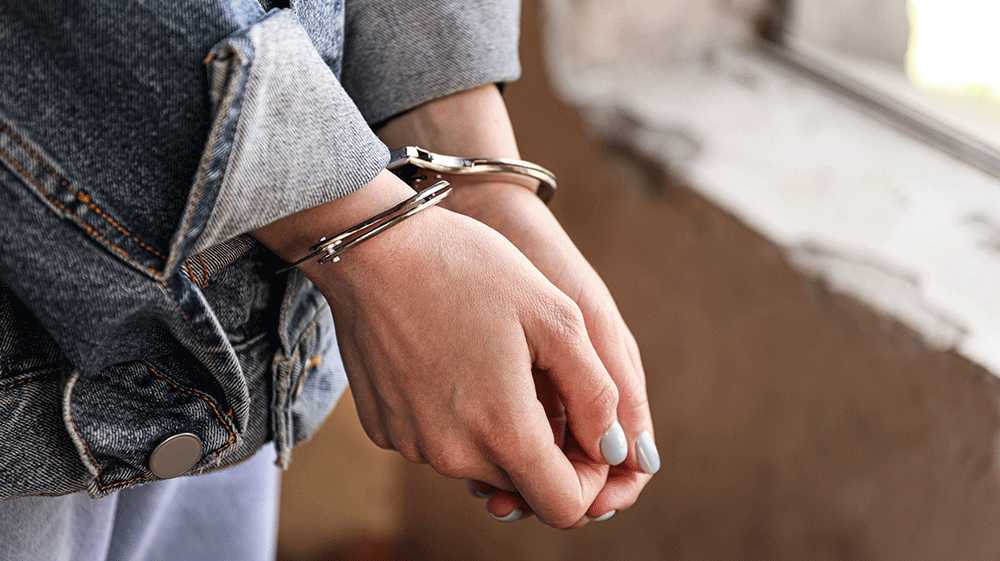The Dec. 16 mass shooting at Abundant Life Christian School in Madison, Wis., which claimed the lives of two people, was allegedly carried out by a 15-year-old female, leading many to ask the question: How common are female school shooters?
Before we look at statistics, it is important to note that the definition of an “active shooting” can vary from study to study.
According to a review by the FBI of active shooter incidents from 2000 to 2019, including 62 that occurred in educational environments, just 13 of the 332 perpetrators were female, making up less than 4%.
Similarly, another database from the U.S. Justice Department shows that from 1966 to 2019, 97.7% of mass shooting perpetrators were male.
According to Northeastern University’s Mass Killings Database, there have been 589 mass shootings since 2006 and only 33 of the shooters — or 5.6% — were female.
RELATED ARTICLE: Early Warning Signs of Potential School Gun Violence
Now let’s look more specifically at school shootings. According to a study from the U.S. Secret Service National Threat Assessment Center, of 41 incidents of targeted school violence between 2008 and 2017, 83% of the suspects were male and 17% were female. This study, however, also includes incidents where no one was hurt.
The National Center for Education Statistics also found that 94% of the active shooters in education settings between 2000 and 2022 were male.
“Historically, and the studies show, that typically it’s a White male student or former student that ends up committing these acts of violence in schools,” Don Mihalek, a retired senior special agent for the Secret Service, told ABC News.
Juvenile Female Mass Shooters Even More Rare
Of 349 homicides at U.S. K-12 schools since 2000, 12 of the known shooters were females and nine of them were under the age of 18, meaning juvenile females made up less than 3% of all shooters in that data set.
Juvenile females who carry out mass school shootings are even more rare. Prior to the Abundant Life Christian School shooting, it had been 45 years since a juvenile female shooter took multiple lives on school grounds, according to the Hamline University’s Violence Prevention Project Research Center. The nonprofit says the last time was in 1979 when a 16-year-old girl fired out of the window of her San Diego home at children arriving at Grover Cleveland Elementary School. Nine people, including eight children, were injured, and two adults were killed.
The Violence Prevention Project says that out of the 200 shooters involved in mass shootings (not just mass school shootings) between 1999 and 2024, only four identified as female and one as transgender. The transgender perpetrator refers to the attacker in the 2023 shooting at Nashville’s Covenant School, which, like Abundant Life, is a private Christian school. However, the shooter, who was a biological female that used he/him pronouns, was not a juvenile — he was 28 years old when he killed three students and three employees.
Why Are Female School Shooters Rare?
So why are female school shooters rare? Jillian Peterson, co-founder of the aforementioned Violence Prevention Project who is also a forensic psychologist and professor of criminology, says many school shooters “see themselves” in the perpetrators behind other mass shootings, which have historically been men.
“Many school shooters study Columbine, for example,” Peterson told NPR in 2021. “Other university shooters study the Virginia Tech shooting. And they really are kind of using those previous shootings as a blueprint for their own.”
Experts also say men are more likely than women to blame others for perceived or known injustices, which can translate into anger and hostility. An article published in the Journal of Mass Violence Research in 2021 that looks at the demographics, motivations, and incidents of female shooters between 1979 and 2018, said previous studies attribute male mass shootings to “some form of male aggrieved entitlement or crisis of masculinity,” often “motivated by grievances with women.”
RELATED ARTICLE: 852 People Have Been Killed by Guns at U.S. Schools
In contrast, the 2021 article found female mass shooters are not motivated by romantic relationship disputes. Instead, they often target workplaces. For instance, in a 2006 mass shooting, a former female U.S. Postal Service employee fatally shot six people at a postal facility in Goleta, California, before taking her own life. The shooter struggled with mental illness and writings found at her home indicated she believed she was threatened by a conspiracy involving postal employees, according to WESA.
The study also says females are more likely to work as part of a pair, “especially when engaging in ideologically motivated attacks.” In 2015, a 29-year-old woman and her husband, who had both pledged support to ISIS, fatally shot 14 people at a holiday party in San Bernardino, California. In 2019, a 50-year-old woman and 47-year-old man killed six people in a targeted attack against a Jewish kosher deli in Jersey City, New Jersey.
Women More Likely to Turn to Self-Destructive Behavior
Emily Salisbury, an associate sociology professor at the University of Utah who studies criminology and gender, told PBS that females typically turn their anger on themselves because American culture has taught them that women don’t hurt people. This can result in self-destructive behaviors, like eating disorders or self-harm, or mental health disorders.
Although few details have been released about the Abundant Life shooter, Salisbury says a girl resorting to that level of violence suggests she experienced severe trauma or violence at home. Court documents obtained by the Washington Post said the teen had a “turbulent home life.” Her parents reportedly divorced and remarried multiple times and their daughter was enrolled in therapy to guide her through their custody arrangements.
“It takes more provocation, more instigation for girls and women to become violent,” Salisbury said. “It’s a very high probability she experienced some sort of violence in her life that can lead to serious mental illness.”
James Alan Fox, a Northeastern University criminologist who presides over the aforementioned Mass Killings Database, also says men and women take different approaches to violence.
“Women tend to use violence as a self-defense mechanism to deal with threats that they feel against them,” he told Northeastern Global News. “Men oftentimes use violence as an offensive weapon — to establish control.”
Studies have also consistently shown that men are more likely than women to use a firearm in the commission of a homicide. Women are more likely to choose a knife if they do turn to violence.
Gun Violence on the Rise Among Minors
Data released by the FBI in Sept. 2024 shows violent crime in the U.S. decreased by 10.3% from June 2023 to June 2024, with murder down 22.7%. However, a report also released in September by the Council on Criminal Justice found homicides committed by minors have risen dramatically, jumping 65% from 315 in 2016 to 521 in 2022.
An increase in firearms, residual effects from the pandemic, and social media are largely to blame, many experts say. Gun sales in the U.S. rose by 60% from Jan. 2020 to Jan. 2021, according to the FBI’s National Instant Criminal Background Check System.
A report from the Education Department also found the rate of student firearm possession during the 2021-2022 school year was higher than any other year in the decade prior.
“Youth access to firearms really just mirrors national access,” David Muhammad, executive director of the National Institute for Criminal Justice Reform and former chief probation officer for Alameda County in California, told USA Today.
During lockdown, children also lost access to critical social supports and spent more time online where threats and bullying continue to run rampant.
“The important issue here is any one of these things in isolation doesn’t have the impact,” Muhammad said. “But the combination of this horrible perfect storm of challenges all culminated to produce this overall increase in gun violence.”
Don Mihalek, the previously mentioned former Secret Service agent, said he also believes social media is partly to blame for increased violence, ABC News reports.
“I think there’s a lot of stuff on social media that is creating these mental health crises within kids, especially girls,” he said. “Now, instead of finding your self-worth in good grades, doing well on a sports team, playing a musical instrument well, teachers and parents telling you ‘good job,’ it’s how many likes, how many people are viewing your feed.”
RELATED ARTICLE: 12 Times ‘See Something, Say Something’ Saved Lives
Mihalek also said many girls are victims of online bullying, largely by other girls.
“It’s tearing apart a kid’s fabric and a lot of them don’t know how to handle it because they’re not really capable at these young ages to understand how to handle a bullying incident like that,” Mihalek said. “In all schools, the key is homing in on behaviors and the pathways to violence. The critical behaviors that put kids on a pathway to violence are social stressors and grievances. If you’re being cyberbullied and told you’re no good online by multiple people, that can easily become a grievance.”













